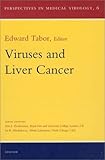Question by Alyssa: How can I stay hydrated with gastrointestinal virus?
I have gastroenteritis that is not a very serious case however I am vomiting a lot. I have no appetite what so ever but I can last a few days without food.
The real problem is that I can't seem to make my self swallow liquids (just my nausea and gag reflex nothing bad) I've tried water and fruit juice but even when I can drink them I can't keep them down long enough for it to make a difference. I have a really dry mouth, tingly skin and now when stand up I get a severe head rush and I am becoming concerned that I may become dehydrated.
I can't think of a way to hydrate my self and I know it seems silly logically to assume that I can find some alternatives to drink or food but I have to try.
Any suggestions?
Best answer:
Get some oral rehydration sachets from your local pharmaceutical store.
Plus zinc supplement. zinc supplementation significantly reduces the severity and duration of diarrhea.
Ask the pharmacists for proper dosage.
Its to maintain proper electrolyte balance and to facilitate rapid rehydration.
Viruses and Liver Cancer, Volume 6 (Perspectives in Medical Virology)
gastrointestinal virus - click on the image below for more information.

gastrointestinal virus
Hepatocellular carcinoma (HCC) is one of the most important complications of chronic viral hepatitis. It usually results in a fatal outcome if not discovered in its earliest stages. Its close association with the hepatitis B and C viruses makes it one of the first human cancers for which there is strong evidence of a viral cause. For this reason it provides a model for studying viral carcinogenesis in humans.
In some countries, HCC is one of the most common tumors of adult men. In additio
Viruses and Liver Cancer, Volume 6 (Perspectives in Medical Virology)
Click on the button for more gastrointestinal virus information and reviews.
Modes Of Transmission For Respiratory Viruses
The main agents of respiratory infections in schoolchildren, their families, and caretakers are respiratory syncytial virus, picornaviruses (especially the three genera enteroviruses, rhinoviruses, and viruses, influenza, adenoviruses, parainfluenza viruses, measles, and human respiratory coronaviruses. Respiratory viruses are shed primarily as nasal or oral secretions (runny nose) or projected into the air by sneezing, coughing, spitting, or speaking. Most are transmitted from the infected person to others by any of three possible mechanisms mentioned above. Specific viruses may be spread by more than one of these mechanisms. Small-particle aerosols are usually generated by coughing or sneezing and may traverse distances 1.8 m, can occur without close or direct contact with the infected person or the infectious secretions. Evidence is emerging that quiet breathing can also generate small particles.
Aerosolized respiratory fluids (small droplets, sometimes less than 1 in size) evaporate quickly when discharged into room air, resulting in droplet nuclei (Riley and O'Grady, 1961). Such small particles do not settle on surfaces and clothes to any appreciable extent, are inefficiently removed by conventional filtration, and are easily dispersed by air movement indoors. Viruses that can be spread by small-particle aerosols, such as the measles, chicken pox, and, sometimes, influenza, can cause rapid outbreaks of infection in susceptible populations. Transmission by large droplets or large particles, in contrast, requires close person-to-person contact, usually ata distance of 50.9m, for infection to occur directly:
Large droplets (10 to 100 diameter) expectorating during a sneeze or cough may be released with sufficient momentum to contact directly the mucosa of another person's eyes, nose, or mouth. However, large droplets have appreciable settling velocities and infectious material might also land on clothing or the surfaces of nearby objects. Some viruses are able to remain infectious on environmental surfaces, are transferable to skin, and can remain infectious for a long enough time to allow self-inoculation into the respiratory tract. The third transmission mechanism is self-inoculation by touching contaminated surfaces.
Clinical studies, especially those using infection control interventions, have indicated that the primary mode of transmission for the most common respiratory and gastrointestinal viruses acquired by children and adults within schools is close contact with infected individuals or touching infectious secretions that contaminate inanimate objects (Hall, 1981; Hall and Douglas, 1981; Hall et al., 1981; Ansari et al., 1991; Mbithi et al., 1992). These articles suggest that fomites are the primary mode and that large droplet spread (across distances of less than 3 feet) is also important. Learning things is not limited to the scentific area. Instead it also has relations with some other things like speaking a language or using software, including Rosetta Stone Polish and Rosetta Stone Portuguese. If you have a creative mind, you will make all your own differences in the end!
Orignal From: How can I stay hydrated with gastrointestinal virus?

No comments:
Post a Comment